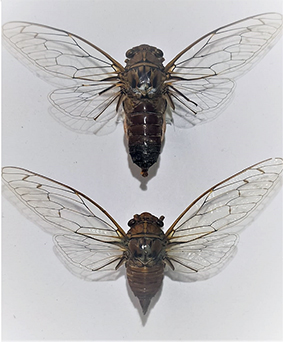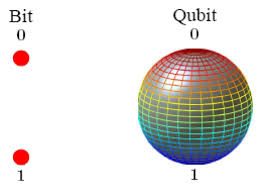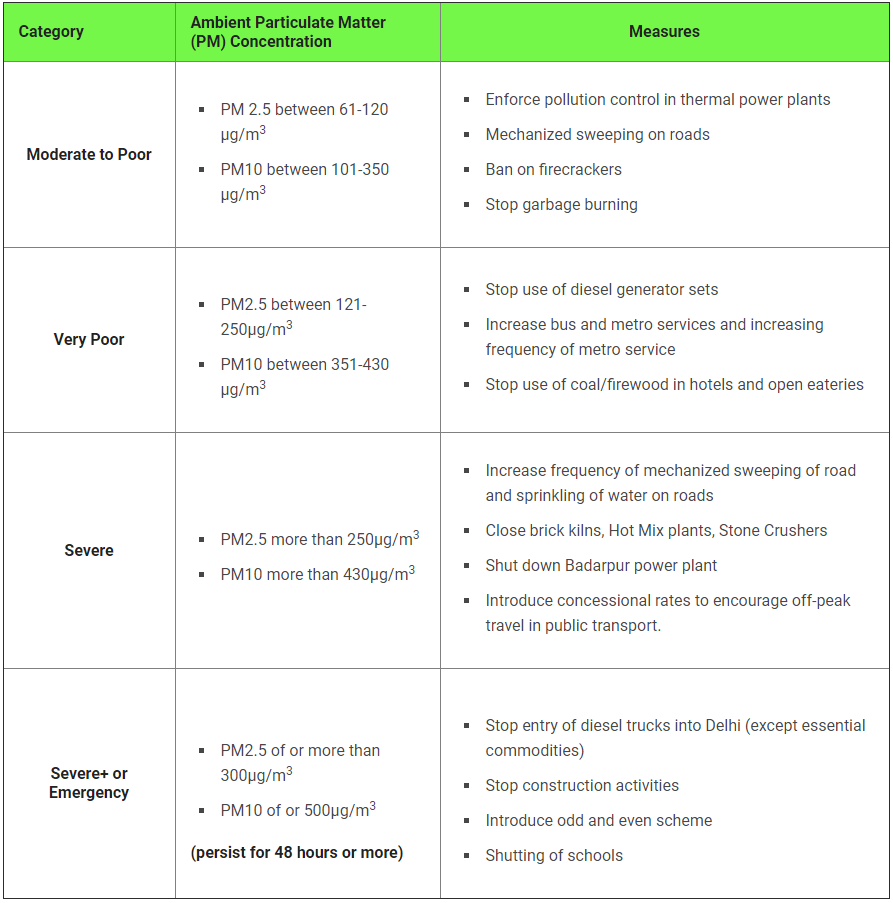Draft EPR Notification: Plastic Packaging Waste
Why in News
Recently, the Union Environment Ministry has come out with a draft notification for regulation of Extended Producer Responsibility (EPR) under Plastic Waste Management rules 2016.
- The draft specifies the quantity of waste that will have to be managed by producers, importers and brand owners who generate plastic packaging waste in India.
- Earlier, the Ministry had notified the Plastic Waste Management Amendment Rules, 2021. These rules prohibit specific single-use plastic items which have “low utility and high littering potential” by 2022.
Key Points
- Producers’ Mandate:
- It mandates producers of plastic packaging material to collect all of their produce by 2024 and ensure that a minimum percentage of it be recycled as well as used in subsequent supply.
- Producers of plastic will be obliged to declare to the government, via a centralised website, how much plastic they produce annually.
- EPR Certificates :
- It has also specified a system whereby makers and users of plastic packaging can collect certificates — called EPR certificates — and trade in them.
- EPR means the responsibility of a producer for the environmentally sound management of the product (plastic packaging) until the end of its life.
- The certificates will help organisations in making up for their shortfall from other organisations that have used recycled content in excess of their obligation.
- It has also specified a system whereby makers and users of plastic packaging can collect certificates — called EPR certificates — and trade in them.
- End-of-Life Disposal:
- Only a fraction of plastic that cannot be recycled — such as multi-layered multi-material plastics — will be eligible to be sent for end-of-life disposal such as road construction, waste to energy, waste to oil and cement kilns.
- The methods only prescribed by the Central Pollution Control Board (CPCB) will be permitted for their disposal.
- Categorization of Plastic Packaging:
- Rigid Plastic:
- They are plastic products that do not give easily when squeezed. Many are large, bulky items like lawn chairs, buckets, toddler toys etc.
- Flexible Plastic:
- It includes packaging of single layer or multilayer (more than one layer with different types of plastic), plastic sheets and covers made of plastic sheet, carry bags (including carry bags made of compostable plastics), plastic sachet or pouches.
- Multi-Layered Plastic Packaging:
- They are the plastics which have at least one layer of plastic and at least one layer of material other than plastic.
- Rigid Plastic:
- Targets:
- Companies will have to collect at least :
- 35% of the target in 2021-22.
- 70% of the target by 2022-23.
- 100% of the target by 2024.
- In 2024, a minimum 50% of their rigid plastic will have to be recycled as will 30% of their category 2 and 3 plastic.
- Every year will see progressively higher targets and after 2026-27, 80% of their category 1 and 60% of the other two categories will need to be recycled.
- There are similar targets, with slight variations, for companies that use packaging material as well as import them.
- Companies will have to collect at least :
- Buying EPR Certificates:
- If entities cannot fulfil their obligations, they will on a “case by case basis” be permitted to buy certificates.
- The CPCB will develop a mechanism for such exchanges on a centralised online portal.
- Non Compliance:
- Non-compliance, however, will not invite a traditional fine. Instead an environmental compensation will be levied, though the rules do not specify how much this compensation will be.
- Fine:
- Entities that do not meet their targets or do not purchase enough credits to meet their annual target must pay a fine.
- Were they to meet their targets within three years, they stand to get a 40% refund. Beyond that, however, the money will be forfeited.
- Funds collected in this way will be put in an escrow account and can be used in collection and recycling/end of life disposal of uncollected and non-recycled/ non-end of life disposal of plastic packaging waste on which the environmental compensation is levied.
- Entities that do not meet their targets or do not purchase enough credits to meet their annual target must pay a fine.
- Banning Plastics:
- From July 2022, the manufacture of a range of plastic products will be banned. The list includes: Earbuds with plastic sticks, plastic sticks for balloons, plastic flags, candy sticks etc.
Suo-Motu Powers of National Green Tribunal
Why in News
Recently, the Supreme Court has declared the National Green Tribunal’s (NGT) position as a “unique” forum endowed with suo motu (on its own motion) powers to take up environmental issues across the country.
Key Points
- Highlights of the Judgement:
- Not limited to Adjudicating Role: The role of the NGT is not simply adjudicatory in nature. The Tribunal has to perform equally vital roles that are preventative, ameliorative or remedial in nature.
- The functional capacity of the NGT is intended to leverage wide powers to do full justice in its environmental mandate.
- Article 21 rights cannot stand on a narrow compass of interpretation. Article 21 of the constitution protects the right to life and personal liberty.
- Multidisciplinary Role: NGT, as a complimentary, competent, specialised forum, to deal with all environmental multidisciplinary issues both as original and also as an appellate authority.
- International Commitment: The NGT embodied the international obligation India owed to the environment.
- The NGT has been recognised as one of the most progressive Tribunals in the world.
- This jurisprudential leap has allowed India to enter a rather exclusive group of nations which have set up such institutions with broad powers.
- Not limited to Adjudicating Role: The role of the NGT is not simply adjudicatory in nature. The Tribunal has to perform equally vital roles that are preventative, ameliorative or remedial in nature.
- About National Green Tribunal:
- It is a specialised body set up under the National Green Tribunal Act (2010) for effective and expeditious disposal of cases relating to environmental protection and conservation of forests and other natural resources.
- With the establishment of the NGT, India became the third country in the world to set up a specialised environmental tribunal, only after Australia and New Zealand, and the first developing country to do so.
- The NGT Act provided a specialized role to the tribunal to act on issues where a dispute arose under seven specified laws (mentioned in Schedule I of the Act): The Water Act, The Water Cess Act, The Forest Conservation Act, Air Act, Environment Protection Act, Public Liability Insurance Act and the Biological Diversity Act.
- NGT is mandated to make disposal of applications or appeals finally within 6 months of filing the same.
- The NGT has five places of sittings, New Delhi is the Principal place of sitting and Bhopal, Pune, Kolkata and Chennai are the other four.
- The Tribunal is headed by the Chairperson who sits in the Principal Bench and has at least ten but not more than twenty judicial members and at least ten but not more than twenty expert members.
- Decisions of the Tribunal are binding. The Tribunal has powers to review its own decisions. If this fails, the decision can be challenged before the Supreme Court within ninety days.
- Associated Challenges:
- Persistent Vacancies: In the last nine years, the NGT has never got the minimum strength of ten judicial and ten expert members to address the increasing number of environmental litigations across the country.
- Implementation of Orders: There are also serious challenges as far as implementation of the NGT’s orders is concerned.
- The NGT Act specifies that the compensation amount as ordered by the tribunal should be remitted to the authority of the Environmental Relief Fund within a period of 30 days from the date of order.
- However, it is observed that the polluters don’t abide by this rule.
- Further, there is no institutional mechanism to ensure that the environmental regulatory authorities comply with the orders of the tribunal.
- Appeals to Supreme Court: The NGT orders are increasingly challenged in the Supreme Court, where a heavy penalty has been imposed by the tribunal.
Way Forward
- There is a need for more autonomy and to widen NGT’s scope for effective protection of the environment in balance with human developmental activities.
- The government needs to provide adequate financial and human resources — if it does not want the NGT to wither away.
- NGT offers a path for the evolution of environmental jurisprudence by setting up an alternative dispute resolution mechanism. It helps reduce the burden of litigation in the higher courts on environmental matters.
Indian Space Association (ISpA)
Why in News
Recently, the Prime Minister has launched the Indian Space Association (ISpA) via video conferencing. ISpA will act as a single-window and independent agency on matters related to space technology.
- The PM also remarked that the Government's approach to space reforms is based on 4 pillars.
Key Points
- About ISpA:
- ISpA aspires to be the collective voice of the Indian Space industry. ISpA will be represented by leading domestic and global corporations that have advanced capabilities in space and satellite technologies.
- ISpA will undertake Policy Advocacy and engage with all stakeholders in the Indian Space domain, including the Government and its Agencies, to make India self-reliant, technologically advanced and a leading player in the space arena.
- ISpA will also work towards building global linkages for the Indian space industry to bring in critical technology and investments into the country to create more high skill jobs.
- Significance of ISpA:
- One of the main goals of the organisation is to supplement the government’s efforts towards making India a global leader in commercial space-based excursions.
- Of late, ISRO’s rockets have been carrying the payload and communication satellites of various countries; now, private players will also look to touch on this space with the new organisation.
- Several private sector companies have shown an interest in India’s space domain, with space-based communication networks coming to the fore.
- Other Related Organisations:
- IN-SPACE: Indian National Space Promotion and Authorization Centre (IN-SPACe) was approved in 2020 to provide a level playing field for private companies to use Indian space infrastructure.
- NSIL: In the 2019 Budget, the government had announced the setting up of a New Space India Limited (NSIL), a public sector company that would serve as a marketing arm of ISRO (Indian Space Research Organisation).
- Its main purpose is to market the technologies developed by ISRO and bring it more clients that need space-based services.
- That role, incidentally, was already being performed by Antrix Corporation, another public sector undertaking working under the Department of Space, and which still exists.
- Four Pillars of Space Reforms:
- Allowing the private sector freedom of innovation.
- Government playing the enabler's role.
- Preparing youngsters for the future.
- Recently, ATL Space Challenge 2021 has been launched. This is to ensure that students of classes 6 to 12 are given an open platform where they can innovate and enable themselves to solve digital age space technology problems.
- Treating the space sector as a resource for the progress of the common man.
- Development projects are being monitored by satellite imaging, space technology is being used in settlement of Fasal Bima Yojna claims and disaster management planning, and the NAVIC system is helping fishermen.
Quantum Key Distribution
Why in News
Recently, the government has inaugurated C-DOT’s (Centre for Development of Telematics) Quantum Communication Lab and unveiled the indigenously developed Quantum Key Distribution (QKD) solution.
- The government has also allocated USD 1 billion for the National Mission on Quantum Technologies and Applications spanning over a period of 8 years.
Key Points
- About:
- QKD, also called Quantum Cryptography, is a mechanism to develop secure communication.
- It provides a way of distributing and sharing secret keys that are necessary for cryptographic protocols.
- Cryptography is the study of secure communications techniques that allow only the sender and intended recipient of a message to view its contents.
- Cryptographic algorithms and protocols are necessary to keep a system secure, particularly when communicating through an untrusted network such as the Internet.
- The conventional cryptosystems used for data-encryption rely on the complexity of mathematical algorithms, whereas the security offered by quantum communication is based on the laws of Physics.
- Mechanism:
- In the QKD, encryption keys are sent as ‘qubits’ (or quantum bits) in an optical fibre.
- Optical fibers are capable of transmitting more data over longer distances and faster than other mediums. It works on the principle of total internal Reflections.
- QKD implementation requires interactions between the legitimate users. These interactions need to be authenticated. This can be achieved through various cryptographic means.
- QKD allows two distant users, who do not share a long secret key initially, to produce a common, random string of secret bits, called a secret key.
- The end-result is that QKD can utilize an authenticated communication channel and transform it into a secure communication channel.
- It is designed in a way that if an illegitimate entity tries to read the transmission, it will disturb the qubits – which are encoded on photons.
- This will generate transmission errors, leading to legitimate end-users being immediately informed.
- In the QKD, encryption keys are sent as ‘qubits’ (or quantum bits) in an optical fibre.
- Qubits:
- Conventional computers process information in ‘bits’ or 1s and 0s, following classical physics under which our computers can process a ‘1’ or a ‘0’ at a time.
- Quantum computers compute in qubits. They exploit the properties of quantum mechanics, the science that governs how matter behaves on the atomic scale.
- In this scheme of things, processors can be a 1 and a 0 simultaneously, a state called quantum superposition.
- Because of quantum superposition, a quantum computer — if it works to plan — can mimic several classical computers working in parallel.
- Need:
- QKD is essential to address the threat that rapid advancement in Quantum Computing poses to the security of the data being transported by various critical sectors through the current communication networks.
- Benefits:
- The technology would be useful in enabling various start-ups and small and medium enterprises in the domain of quantum information.
- It is expected to create a definition of standards and formulate crypto technology-related policies.
- Significance:
- Detection of Leak:
- It allows the detection of data leak or hacking because it can detect any such attempt.
- Predetermined Error Levels:
- It also allows the process of setting the error level between the intercepted data.
- Unbreakable Encryption:
- The encryption is unbreakable and that’s mainly because of the way data is carried via the photon.
- A photon cannot be perfectly copied and any attempt to measure it will disturb it. This means that a person trying to intercept the data will leave a trace.
- Detection of Leak:
Intermediate-Mass Black Holes
Why in News
Scientists from Chennai Mathematical Institute and Ors. have analysed data from the LIGO-VIRGO observatories and estimated the fraction of the binary Black Hole mergers detected so far that show potential to form Intermediate-Mass Black Holes.
Key Notes
- About Black Hole Mergers:
- It is the phenomenon of merging of two or more black holes.
- Indian scientists have already observed merger of three supermassive black holes.
- Merging of two or more black holes results in different types of black holes. For eg, Intermediate-Mass Black Holes and Binary Black Holes.
- Intermediate-Mass black hole (IMBH) is a class of black hole with mass in the range 102–105 solar masses: significantly more than stellar black holes but less than supermassive black holes.
- One of the theories of intermediate mass black hole formation has to do with ‘hierarchical growth’.
- That is, if the black holes exist among a dense cluster of stars, the remnant (black hole) of a merger can pair up with another black hole close by to form a binary. This can eventually merge to form a second remnant which is more massive. This process, happening in a hierarchical manner, can explain intermediate mass black hole formation.
- Gravitational Waves (GW) are created when two black holes orbit each other and merge.
- Kicks in Mergers:
- “Kicks” is the opposite momentum acquired by a remnant black hole during mergers. It is a reaction to Gravitational Waves taking away energy and linear momentum during mergers.
- These kicks can be quite large, giving it a velocity of up to 1000 kilometres per second.
- If this kick velocity is above the escape velocity of the star cluster in which the black hole is formed, it escapes from the environment and moves out. This hinders further hierarchical mergers.
- The extent of the kick received by the remnant can be calculated from the masses of the merging black holes and their spin. The kick estimates help understand which mergers have the possibility of forming Intermediate-Mass black holes.
Black Hole
- It refers to a point in space where the matter is so compressed as to create a gravity field from which even light cannot escape.
- The concept was theorized by Albert Einstein in 1915 and the term ‘black hole’ was coined by John Archibald Wheeler.
- Black holes form when a massive star undergoes a supernova explosion towards the end of its lifetime. The black hole forms from the remnants of the explosion.
- It is not necessary that a star at the end of its lifetime will become a black hole. As stars reach the ends of their lives, most will inflate, lose mass, and then cool to form white dwarfs. But the largest of them, those at least 10 to 20 times as massive as our own sun, are destined to become either super-dense neutron stars or so-called stellar-mass black holes.
- Usually, the black holes belong to two categories:
- One category is of Stellar black holes ranges between a few solar masses and tens of solar masses. These are thought to form when massive stars die.
- The other category is of supermassive black holes. These range from hundreds of thousands to billions of times that of the Sun from our Solar system. These are thought to form when two or more black holes merge.
- In April 2019, the scientists at the Event Horizon Telescope Project released the first-ever image of a Black Hole (more precisely, of its shadow).
Global Girlhood Report 2021: Girls Right in Crisis
Why in News
Recently, an Non-Governmental Organization (NGO), Save the Children released the Global Girlhood Report 2021: Girls Right in Crisis.
International Day of the Girl Child
- About:
- It is observed annually on 11th October. It was declared by the United Nations (UN), which was first observed in 2012.
- A resolution to declare 11th October as the International Day of the Girl Child was adopted by the UN General Assembly on 19th December 2011.
- The day is dedicated to raising awareness on gender equality while assuring rights and improving opportunities for girls.
- It is observed annually on 11th October. It was declared by the United Nations (UN), which was first observed in 2012.
- Theme for 2021:
- Digital generation. Our generation.
Key Points
- Rate of Child Marriage:
- West and Central Africa has the highest rate of child marriage in the world.
- Death Due to Child Marriage:
- Child marriage kills more than 60 girls a day globally, 26 girls a day in West and Central Africa and six girls a day in South Asia.
- South Asia is followed by East Asia and the Pacific and Latin American and the Caribbean.
- The deaths are majorly caused from pregnancy and childbirth resulting from child marriage.
- Child marriage kills more than 60 girls a day globally, 26 girls a day in West and Central Africa and six girls a day in South Asia.
- Effect of Covid on Child Marriage:
- With school closures, health services under strain or closed, and more families being pushed into poverty, women and girls face an increased risk of violence during lengthy lockdowns.
- A further 10 million girls are now expected to marry by 2030, leaving more girls at risk of dying.
- Earlier, according to a report published by ChildLine India the pandemic and the subsequent lockdown have proved to be new drivers of child marriages in rural Madhya Pradesh.
- Also some activists and organisations of Karnataka have raised the issue of increased child marriages in Lockdown with the Ministry of Women and Child Development.
- With school closures, health services under strain or closed, and more families being pushed into poverty, women and girls face an increased risk of violence during lengthy lockdowns.
- Suggestions: The report called on the governments to:
- Help Girls Raising Voices:
- Raise girls’ voices by supporting their right to safe and meaningful participation in all public decision-making.
- Focus on Gender Equality:
- Address immediate and ongoing risks of gender-based violence, including child marriage, by putting girls’ rights and gender equality at the center of Covid-19 and humanitarian responses, development policy, and broader efforts to build forward better.
- Guarantee Girls Their Rights:
- Guarantee the rights of all girls, including those impacted by different forms of inequality and discrimination by developing inclusive policies and programs. Safe and ethical data collection must also be improved to better understand and respond in real-time to Covid-19’s impact on existing economic, climate, and conflict-related crises.
- Ensure Participation of Female Staffs:
- Ensure the safe and unrestricted participation of female humanitarian staff in all humanitarian response efforts, including needs assessments and the design, implementation, and monitoring, and evaluation of all humanitarian services at every level.
- Join the Generation Equality Movement:
- The movement is working to deliver on the Global Acceleration Plan for Gender Equality (launched by Generation Equality Forum), which set a target to prevent nine million child marriages in five years.
- Help Girls Raising Voices:
- Related Indian Initiatives:
- The Child Marriage Restraint Act of 1929 restricts the practice of child marriage.
- The Special Marriage Act, 1954 and the Prohibition of Child Marriage Act, 2006 prescribe 18 and 21 years as the minimum age of consent for marriage for women and men respectively.
- The Prohibition of Child Marriage Act, 2006 was enacted to address and fix the shortcomings of the Child Marriage Restraint Act.
- The Union Ministry for Women and Child Development has set up a committee to examine matters pertaining to age of motherhood, imperatives of lowering Maternal Mortality Ratio and the improvement of nutritional levels among women. The Committee is headed by Jaya Jaitely.
- The Committee was proposed in the Union Budget 2020-21.
- Prevention of Child Marriage is a part of SDG 5 which deals with gender equality and empowerment of all women and girls.
Child Marriages India Specific Data
- United Nations Children's Fund (UNICEF) estimates suggest that each year, at least 1.5 million girls under 18 get married in India, which makes it home to the largest number of child brides in the world - accounting for a third of the global total.
- Nearly 16% of adolescent girls aged 15-19 are currently married.
- While the prevalence of girls getting married before age 18 has declined from 47% to 27% between 2005-2006 and 2015-2016.
Graded Response Action Plan (GRAP)
Why in News
Recently, the Commission for Air Quality Management (CAQM) has said that the measures under the “very poor” and “severe” category of the Graded Response Action Plan (GRAP) will kick in only when the air quality deteriorates further and stays in prescribed levels for 48 hours.
Key Points
- Graded Response Action Plan (GRAP):
- About:
- In pursuant to the Supreme Court’s order in the matter of M. C. Mehta vs. Union of India (2016) regarding air quality in the National Capital Region of Delhi, a Graded Response Action Plan has been prepared for implementation under different Air Quality Index (AQI) categories namely, Moderate & Poor, Very Poor, and Severe.
- A new category of “Severe+ or Emergency” has been added.
- The Plan was notified by the Ministry of Environment, Forests & Climate Change in 2017.
- It institutionalised measures to be taken when air quality deteriorates.
- The plan is incremental in nature - therefore, when the air quality moves from ‘Poor’ to ‘Very Poor’, the measures listed under both sections have to be followed.
- It prevents PM10 and PM2.5 levels from going beyond the ‘moderate’ national AQI category.
- In pursuant to the Supreme Court’s order in the matter of M. C. Mehta vs. Union of India (2016) regarding air quality in the National Capital Region of Delhi, a Graded Response Action Plan has been prepared for implementation under different Air Quality Index (AQI) categories namely, Moderate & Poor, Very Poor, and Severe.
- Implementation:
- Till 2020, the Supreme Court-appointed Environment Pollution (Prevention & Control) Authority (EPCA) used to order States to implement GRAP measures.
- The EPCA was dissolved and replaced by the Commission for Air Quality Management (CAQM) in 2020.
- CAQM is a statutory mechanism to coordinate and oversee diverse efforts to improve air quality in Delhi, Punjab, Haryana, Rajasthan and UP, with the underlying remedial approach.
- About:
- Other Measures:
- Environment Protection Charge (EPC): In 2016, the SC imposed an EPC of 1% on the sale of 2000cc and above diesel cars in Delhi and NCR.
- Environment Compensation Charge (ECC): In the year 2015, the SC imposed ECC on trucks entering Delhi.
Indian Sandalwood
Why in News
Recently, as a part of the ongoing 'Azaadi ka Amrit Mahotsav’ initiative, the government of India inaugurated a training program on Indian Sandalwood Farming & Management.
- The programme aims at establishing Sandalwood Technology Innovation centres in the growing states, value addition in training & skill development as well as introducing new methods of cultivation among farmers & young entrepreneurs.
Key Points
- About:
- Santalum album, commonly known as Indian Sandalwood, is a dry deciduous forest species native to China, India, Indonesia, Australia, and the Philippines.
- Sandalwood has been long associated with the Indian heritage & culture, as the country contributed 85% of the world’ sandalwood trade erstwhile. However, lately this has been declining at a fast rate.
- This small tropical tree grows to 20m high with red wood and a variety of dark colors of bark (dark brown, reddish and dark grey).
- Because it is strong and durable, S. album is mostly harvested for its timber.
- Santalum album, commonly known as Indian Sandalwood, is a dry deciduous forest species native to China, India, Indonesia, Australia, and the Philippines.
- IUCN Red List Status: Vulnerable
- Uses:
- In India, it is also called "Chandan" and "Srigandha". Sandalwood has a special place in Indian tradition where it is being used from cradle to cremation.
- Sandalwood heartwood, which is close-grained, is used for fine furniture and carving. The heartwood and roots also contain ‘sandal oil’ which is valued for use in perfumes, incense, cosmetics, soaps, and medicines. The bark contains tannin, which is used for dye.
- Sandalwood essential oil has antiseptic, anti inflammatory, antispasmodic and astringent properties.
- It is used in aromatherapy to reduce stress, hypertension and heals wounds and treats skin blemishes.
- Major Growing Areas: In India, sandalwood is mostly grown in Andhra Pradesh, Telangana, Bihar, Gujarat, Karnataka, Madhya Pradesh, Maharashtra, and Tamil Nadu.
Sandalwood Market
- Though there are many varieties of sandalwood available in the world, Indian sandalwood and Australian sandalwood are very famous and have excellent commercial value in the market.
- Globally, India & Australia are the largest growers of sandalwood, while the biggest markets lie in the United States, China, Japan & the Indian domestic market.
New Cicada Species: Nagaland
Why in News
Recently, a new cicada species (Platyomia kohimaensis) was found in the Naga Hills of Nagaland.
- Earlier, two species of Cicadas Savazana mirabilis and Salvazana imperalis were discovered in Meghalaya.
Key Points
- About:

- Cicadas are hemipteran insects known for their loud, complex and species-specific acoustic signals or songs.
- Hemipteran insects, also called true bugs, have mouthparts used for piercing and sucking and have two pairs of wings.
- The new cicada species belongs to the Platylomia radha group described from the Naga Hills in the eastern Himalayas.
- It is a dusk singing, large-sized cicada that calls for a short window during the evening twilight hours. It timbalises in the form of a continuous and regular cackling.
- Timbal is a sound producing membrane in various insects.
- Cicadas are hemipteran insects known for their loud, complex and species-specific acoustic signals or songs.
- Significance of Cicadas:
- They are mostly beneficial. They prune mature trees, aerate the soil, and once they die, their bodies serve as an important source of nitrogen for growing trees.
- With their acoustic signatures, they act as indicators of a healthy forest ecosystem.
- Habitat:
- Most cicadas are canopy dwellers and are found in natural forests with large trees.
- The generic diversity of cicadas in India and Bangladesh ranks the highest in the world, followed by China.
- Threat:
- Large-scale clearing of natural forest land into human settlement and agricultural fields, along with burning of forests is behind the shrinking distribution of Cicada.
- Since it is considered a delicacy and fetches a good price, its unabated capturing and killing during its mass emergence poses a great threat to its survival.





